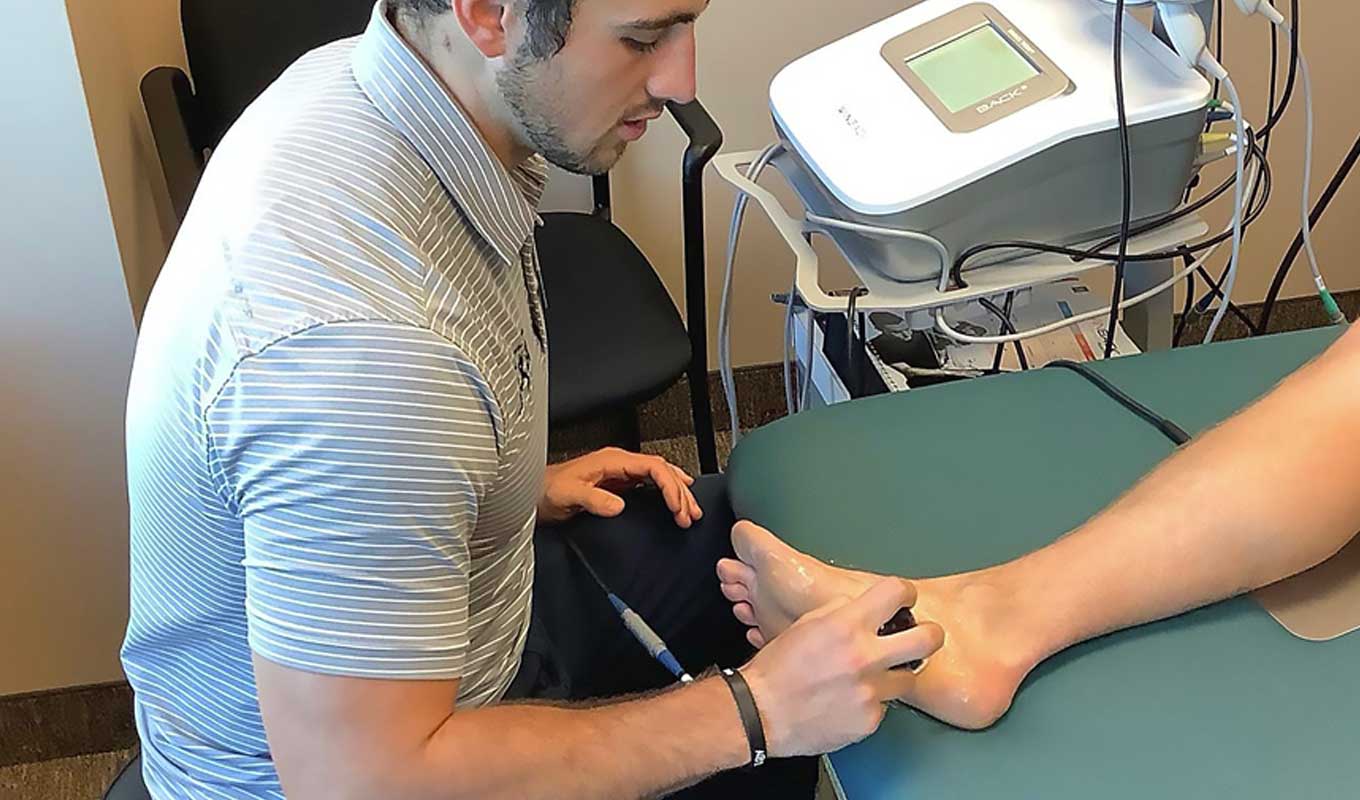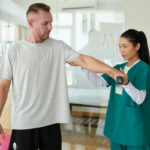An injured tendon had been nagging Samaritan Ministries member Jared Clinkscales for two years.
“I went to everybody and tried everything,” the Fort Collins, Colorado, resident said of the hiking injury.
An injured tendon had been nagging Samaritan Ministries member Jared Clinkscales for two years.
“I went to everybody and tried everything,” the Fort Collins, Colorado, resident said of the hiking injury.
One practice he hadn’t tried, though, was Hecker Sports and Regenerative Medicine, run by fellow Samaritan member Dr. Tom Hecker, also in Fort Collins. Jared gave it a try.
After undergoing four types of topical therapy that stimulated the healing process plus some prolotherapy injections, Jared said, his pain went from 8 on a scale of 10 late last year “to maybe a 0.5” by early 2023.
“It’s so far down in pain that I can’t even call it pain anymore,” Jared said. “I’ve had two years of this consuming me. I could not walk or sit without it feeling like a knife being stuck inside the foot. They have a very innovative, very knowledgeable doctor and staff.”
Physician, heal thyself
Orthopedic surgeon Tom Hecker, who specializes in foot and ankle injuries, became aware of regenerative medicine when looking for a solution that didn’t involve surgery after “shattering” his own ankle in a 2007 snowshoeing accident.
“It just blew the bone up,” he said of the injury.
Dr. Hecker’s fellow orthopedic surgeons gave up on the ankle.
“In a surgeon’s world, you can’t recover something that’s in that many pieces,” Dr. Hecker said. “There’s no way to put it back together.”
The prognosis was that the bone would die, so doctors recommended amputation.
“I was not willing to accept that, so I started looking for alternatives,” Dr. Hecker said.
After being introduced to a “very unique” brace that helped the leg continue to function, Dr. Hecker said he thought, “OK, this thing might survive. What else could I do that would help?”
The processes he found involved a combination of laser and acoustic therapies that avoid the trauma of surgery and the trauma of high medical bills. The results have had him on his feet and living with a generally healthy ankle—“I would put it at 92 percent”—for the past 15 years.
The orthopedic surgery group he was with wasn’t willing to offer the nonsurgical methods that had helped him, so he created Hecker Sports and Regenerative Medicine in 2015. Right now, his staff focuses on foot and ankle injuries, but they are expanding that to upper-body injuries.
Key treatments
Dr. Hecker’s practice offers various treatments, but three of them are most key to helping patients.
Lasers wake up dormant cells in the injured area so they “can start doing what they’re supposed to do,” Dr. Hecker said. Surgery, he noted, may fix the injured or damaged structure, but it doesn’t help it heal. “In the surgical world, that’s why I believe success rates are poorer, especially in soft-tissue injuries,” Dr. Hecker said.
A “radio frequency tool” helps those awakened cells to get “cleaned up.” “If you can clear the cell of the junk that in essence is inside the cell, this cell can start working and you can produce a very healthy cell. I’ve opened up the door, let the thing air out, and now the cell is functioning at a high level.” The radio frequency tool stimulates high blood-supply levels and leads to better blood-flow into an area. It also stimulates dormant tissue-specific stem cells. “They’re ready to work when appropriately stimulated either externally or internally.”
A focused shockwave system is the final tool that Dr. Hecker typically uses with patients. It breaks up crystallized collagen in the tissue to allow the regrowth and embedding of healthy collagen, which is a protein found in connective tissue.
That’s all that most people need, Dr. Hecker said, although his practice has other tools and therapies at hand. One is a Sanexus machine, which is an electromagnetic neuromuscular stimulator. Another uses acoustic vibrations to stimulate nerves within the skin and muscle fiber. Some situations, such as Jared’s, also call for a finishing touch of prolotherapy injections, which use glucose to further stimulate tissue healing.
“I tell my patients I’m not interested in ‘calming down’ their injury. I’m interested in getting them better and back out there,” Dr. Hecker said. “I want them out climbing a mountain. I want them running their marathons again. We have a lot of elderly patients who are very active in pickleball and tennis and hiking. If I’m doing the job right, they’ll have a long-term success rate.”
Two main advantages
There are two main medical advantages to noninvasive orthopedic treatment, Dr. Hecker said.
The first is a lack of physical and emotional scars that can result from surgery.
“We can heal the tissue back to a high level,” Dr. Hecker said. “We call it constructive remodeling, or more complete healing, meaning it’s not fibrosis.”
Fibrosis is the buildup of fibrous connective tissue due to an injury rather than the rejuvenation of what Dr. Hecker calls the “original parts.”
“I’m a big fan of original parts, so let’s try to make what’s there work,” he said. “Degenerative arthritis, for example, is a ligament problem, not a joint problem. It’s a ligament wearing out. In the orthopedic world, we don’t have ways to fix it, so we replace something. Or we fuse something. Thankfully, with our treatments, we can make a tendon better. We can make a ligament better and maintain stability, so now you don’t need the bigger surgery.”
The second advantage is “there’s no downtime.”
“Our patients are on their feet the whole time,” Dr. Hecker said. “They’re walking. We use many types of braces. I have a gentleman with 90 percent rupture (of a ligament), but he hasn’t missed a day of work. He’s a very active person, coaches many sports. He’s able every day to always be on his feet in the process of getting this thing to heal and he’s doing great.
“He had a full rupture on one side and had surgery, and he said, ‘I don’t want to go through that again.’ He can maintain a fairly normal lifestyle. We’re now in the process of stimulating these cells.”
Dr. Hecker believes that “the level of recovery is based on the level of load the tissue is going through.”
“That’s going to force the body to respond at a much different level in terms of how the tissue heals and is strengthened, whether it’s bone or whatever,” he said. “Moving forces the body to respond with stronger tissue.
“We want load (on the affected area). We just want to control that load. Appropriate load makes the bone heal, makes the bone remodel, and changes the bone according to its stress. But overload is fracture and underload is osteoporosis.”
Lower cost
A third advantage of an approach like Dr. Hecker’s is cost.
“Typical surgery is going to cost you, for, say, an Achilles tendon, between $12,000 and $20,000,” Dr. Hecker said.
“For what we do, the most expensive regenerative package is $4,800 and the average is right at about $2,000.”
That cost, he said, includes post-treatment rehab, which is done by an athletic trainer instead of a physical therapist.


